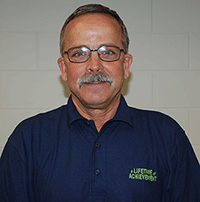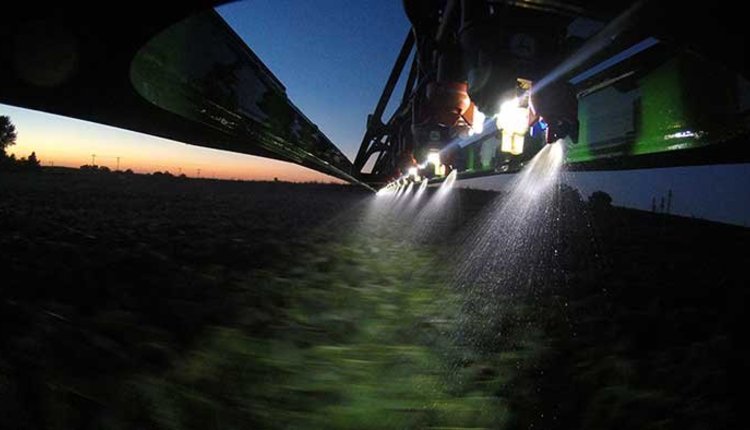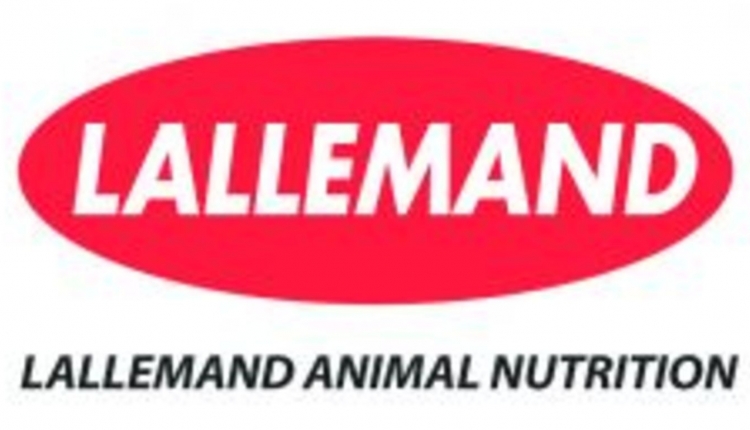Many calf barns rely on natural ventilation to provide clean, fresh air to calf pens. But, as the weather cools down and winter approaches, there can be a tendency to close the doors, windows and curtains on the calf barn in an effort to reduce drafts. Preventing cold air from blowing on calves can help keep calves warm, but when buildings are closed proper air exchange to keep calves healthy through the winter months can be prohibited.
 "If you fail to get good ventilation or adequate air exchange in calf barns, you get a build-up of dust, pathogens and moisture in the air," says Gary Geisler, calf and heifer specialist with Purina Animal Nutrition. "A build-up of ammonia can occur and cause irritation to the respiratory system of calves."
"If you fail to get good ventilation or adequate air exchange in calf barns, you get a build-up of dust, pathogens and moisture in the air," says Gary Geisler, calf and heifer specialist with Purina Animal Nutrition. "A build-up of ammonia can occur and cause irritation to the respiratory system of calves."
Geisler cautions that if close attention is not paid to ventilation, a breakout of pneumonia or another respiratory disease could occur. Symptoms that might indicate a respiratory infection include: coughing, nasal discharge and watery eyes.
Prevent microenvironments
The goal for wintertime ventilation is to have a minimum of four interior air exchanges per hour in calf barns, which can be provided by a positive pressure ventilation system. A well-designed system will deliver fresh air to the immediate environment of the calf without creating a draft.
"A positive pressure ventilation system supplies fresh, outside air into the calf barn and distributes the air evenly throughout the barn," says Geisler. "In barns with individual calf pens this is especially important because the system is designed to move air into "dead spots" – areas where the air may be stagnant, such as between solid calf pen panels. Stagnant air can harbor airborne pathogens."
Positive pressure ventilation systems when designed properly can run 24 hours per day, even in cold weather.

Proper planning is critical
While positive pressure ventilation systems can be a great solution for providing air exchange throughout your barn, Geisler cautions that these systems are "not one size fits all."
"Positive pressure ventilation systems should be designed based on the number of calves, size of building, dimensions of the barn, layout of the calf pens and more," says Geisler. "It takes precise planning to achieve even distribution of air throughout the facility, but no drafts."
There is a fine line between providing adequate ventilation and creating drafts. Geisler recommends dairy producers do their homework, to not cut corners and to work with the experts when investing in a positive pressure ventilation system.
The Dairyland Initiative, a University of Wisconsin School of Veterinary Medicine outreach program, provides resources that can assist dairy producers in properly planning a ventilation system. A list of trained designed consultants throughout the U.S., Canada and beyond can be found online at thedairylandinitiative.vetmed.wisc.edu.
Other wintertime factors to consider
There are a variety of other management practices that can be implemented during cool weather months in group housing settings to help calves thrive. These practices can include:
"In the grand scheme of things, the investment in your ventilation system should be worth every penny saved in reduced antibiotic and veterinary expenses required to treat respiratory disease and other health issues," says Geisler. "It's not an area worth sacrificing on, particularly when the answer could be as simple as a low cost ventilation tube."
For more information, contact Gary Geisler at (920) 428-9128, email gjgeisler@landolakes.com or visit www.amplicalf.com.
 Purina Animal Nutrition LLC(www.purinamills.com) is a national organization serving producers, animal owners and their families through more than 4,700 local cooperatives, independent dealers and other large retailers across the United States. Driven by an uncompromising commitment to animal excellence, Purina Animal Nutrition is an industry innovator, offering America's leading brands of complete feeds, supplements, premixes, ingredients and specialty technologies for the livestock and lifestyle animal markets. Headquartered in Shoreview, Minn., Purina Animal Nutrition LLC is a wholly owned subsidiary of Land O'Lakes, Inc.
Purina Animal Nutrition LLC(www.purinamills.com) is a national organization serving producers, animal owners and their families through more than 4,700 local cooperatives, independent dealers and other large retailers across the United States. Driven by an uncompromising commitment to animal excellence, Purina Animal Nutrition is an industry innovator, offering America's leading brands of complete feeds, supplements, premixes, ingredients and specialty technologies for the livestock and lifestyle animal markets. Headquartered in Shoreview, Minn., Purina Animal Nutrition LLC is a wholly owned subsidiary of Land O'Lakes, Inc.
10.15.2014
 "If you fail to get good ventilation or adequate air exchange in calf barns, you get a build-up of dust, pathogens and moisture in the air," says Gary Geisler, calf and heifer specialist with Purina Animal Nutrition. "A build-up of ammonia can occur and cause irritation to the respiratory system of calves."
"If you fail to get good ventilation or adequate air exchange in calf barns, you get a build-up of dust, pathogens and moisture in the air," says Gary Geisler, calf and heifer specialist with Purina Animal Nutrition. "A build-up of ammonia can occur and cause irritation to the respiratory system of calves."Geisler cautions that if close attention is not paid to ventilation, a breakout of pneumonia or another respiratory disease could occur. Symptoms that might indicate a respiratory infection include: coughing, nasal discharge and watery eyes.
Prevent microenvironments
The goal for wintertime ventilation is to have a minimum of four interior air exchanges per hour in calf barns, which can be provided by a positive pressure ventilation system. A well-designed system will deliver fresh air to the immediate environment of the calf without creating a draft.
"A positive pressure ventilation system supplies fresh, outside air into the calf barn and distributes the air evenly throughout the barn," says Geisler. "In barns with individual calf pens this is especially important because the system is designed to move air into "dead spots" – areas where the air may be stagnant, such as between solid calf pen panels. Stagnant air can harbor airborne pathogens."
Positive pressure ventilation systems when designed properly can run 24 hours per day, even in cold weather.

Proper planning is critical
While positive pressure ventilation systems can be a great solution for providing air exchange throughout your barn, Geisler cautions that these systems are "not one size fits all."
"Positive pressure ventilation systems should be designed based on the number of calves, size of building, dimensions of the barn, layout of the calf pens and more," says Geisler. "It takes precise planning to achieve even distribution of air throughout the facility, but no drafts."
There is a fine line between providing adequate ventilation and creating drafts. Geisler recommends dairy producers do their homework, to not cut corners and to work with the experts when investing in a positive pressure ventilation system.
The Dairyland Initiative, a University of Wisconsin School of Veterinary Medicine outreach program, provides resources that can assist dairy producers in properly planning a ventilation system. A list of trained designed consultants throughout the U.S., Canada and beyond can be found online at thedairylandinitiative.vetmed.wisc.edu.
Other wintertime factors to consider
There are a variety of other management practices that can be implemented during cool weather months in group housing settings to help calves thrive. These practices can include:
- Making sure each calf has 30-35 square feet of resting space.
- Having 5-6 inches of packed bedding between the floor and the calf.
- Bedding with deep, clean, dry straw that calves can nestle in.
- Providing calf jackets as needed.
- Using pens with an open front and back, with solid panels in between. An open wire panel may be used between no more than two neighboring calves to provide social interaction.
- Increasing milk solids by ? to ? of a pound, recommended as a third feeding.
"In the grand scheme of things, the investment in your ventilation system should be worth every penny saved in reduced antibiotic and veterinary expenses required to treat respiratory disease and other health issues," says Geisler. "It's not an area worth sacrificing on, particularly when the answer could be as simple as a low cost ventilation tube."
For more information, contact Gary Geisler at (920) 428-9128, email gjgeisler@landolakes.com or visit www.amplicalf.com.
 Purina Animal Nutrition LLC(www.purinamills.com) is a national organization serving producers, animal owners and their families through more than 4,700 local cooperatives, independent dealers and other large retailers across the United States. Driven by an uncompromising commitment to animal excellence, Purina Animal Nutrition is an industry innovator, offering America's leading brands of complete feeds, supplements, premixes, ingredients and specialty technologies for the livestock and lifestyle animal markets. Headquartered in Shoreview, Minn., Purina Animal Nutrition LLC is a wholly owned subsidiary of Land O'Lakes, Inc.
Purina Animal Nutrition LLC(www.purinamills.com) is a national organization serving producers, animal owners and their families through more than 4,700 local cooperatives, independent dealers and other large retailers across the United States. Driven by an uncompromising commitment to animal excellence, Purina Animal Nutrition is an industry innovator, offering America's leading brands of complete feeds, supplements, premixes, ingredients and specialty technologies for the livestock and lifestyle animal markets. Headquartered in Shoreview, Minn., Purina Animal Nutrition LLC is a wholly owned subsidiary of Land O'Lakes, Inc.10.15.2014








